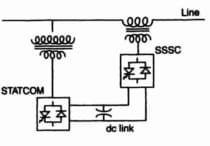1. Global warming
2. Fragmentation of habitat
3. Invasion of alien species
4. Promotion of vegetarianism
Select the correct answer using the codes given below.
a. 1, 2 and 3 only
b. 2 and 3 only
c. 1 and 4 only
d. 1, 2, and 4
2. In which one among the following categories of protected areas in India are local people not allowed to collect and use the biomass?
a. Biosphere Reserves
b. National Parks
c. Wetlands declared under Ramsar Convention
d. Wildlife Sanctuaries
3. Consider the following protected areas
1. Bandipur
2. Bhitarkanika
3. Manas
4. Sunderbans
Which of the above are declared Tiger Reserves?
a. 1, 3 and 2 only
b. 1, 3 and 4 only
c. 2, 3 and 4 only
d. 1, 2, 3 and 4
4. What is the difference between the antelopes Oryx and Chiru?
a. Oryx is adapted to live in hot and arid areas whereas Chiru is adapted to live in steppes and semi-desert areas of cold high mountains.
b. Oryx is poached for its antlers whereas Chiru is poached for its musk.
c. Oryx exists in western India only whereas Chiru exists in north-east India only.
d. None of the statements a, b, and c given above is correct.
5. Consider the following:
1. Black-necked crane
2. Cheetah
3. Flying squirrel
4. Snow leopard
Which of the above are naturally found in India?
a. 1,2 and 3 only
b. 1,3 and 4 only
c. 2 and 4 only
d. 1,2,3 and 4
6. Consider the following kinds of organisms
1. Bat
2. Bee
3. Bird
Which of the above is/are pollinating agent / agents?
a. 1 and 2 only
b. 2 only
c. 1 and 3 only
d. 1, 2 and 3
7. Which one of the following groups of animals belongs to the category of endangered species?
a. Great Indian Bustard, Musk Deer, Red Panda and Asiatic Wild Ass
b. Kashmir Stag, Cheetal, Blue Bull and Great Indian Bustard
c. Snow Leopard, Swamp Deer, Rhesus Monkey and Saras (Crane)
d. Lion-tailed Macaque, Blue Bull, Hanuman Langur and Cheetal
8. What would happen if phytoplankton of an ocean is completely destroyed for some reason?
1. The ocean as a carbon sink would be adversely affected.
2. The food chains in the ocean would be adversely affected.
3. The density of ocean water would drastically decrease.
Select the using codes given below:
a. 1 and 2 only
b. 2 only
c. 3 only
d. 1,2 and 3
9. With reference to the wetlands of India, consider the following statements:
1. The country’s total geographical area under the category of wetlands is recorded more in Gujarat as compared to other States.
2. In India, the total geographical area of coastal wetlands is larger than that of inland wetlands.
Which of the statements given above is/are correct?
a. 1 only
b. 2 only
c. Both 1 and 2
d. Neither 1 nor 2
10. Vultures which used to be very common in Indian countryside some years age are rarely seen nowadays. This is attributed to
a. the destruction of their nesting sites by new invasive species.
b. a drug used by cattle owners for treating their diseased cattle.
c. scarcity of food available to them
d. a widespread, persistent and fatal disease among them
11.Consider the following statements: Chlorofluorocarbons, known as ozone- depleting substances, are used
1. in the production of plastic foams
2. in the production of tubeless tyres
3. in cleaning certain electronic components
4. as pressurizing agents in aerosol cans
Which of the statements given above is/are correct?
a. 1, 2 and 3 only
b. 4 only
c. 1, 3 and 4 only
d. 1, 2, 3 and 4
12. The increasing amount of carbon dioxide in the air is slowly raising the temperature of the atmosphere, because it absorbs
a. the water vapour of the air and retains its heat.
b. the ultraviolet part of the solar radiation.
c. all the solar radiations.
d. the infrared part of the solar radiation
13. The acidification of oceans is increasing. Why is this phenomenon a cause of concern?
1. The growth and survival of calcareous phytoplankton will be adversely affected.
2. The growth and survival of coral reefs will be adversely affected.
3. The survival of some animals that have phytoplanktonic larvae will be adversely affected.
4. The cloud seeding and formation of clouds will be adversely affected.
Which of statements given above is / are correct?
a. 1,2 and 3 only
b. 2 only
c. 1 and 3 only
d. 1,2,3 and 4
14. The National Green Tribunal Act, 2010 was enacted in consonance with which of the following provisions of the Constitution of India?
1. Right to healthy environment, construed as a part of Right to life under Article 21.
2. Provision of grants for raising the level of administration in the Scheduled Areas for the welfare of Scheduled Tribes under Article 275(1)
Which of the statements given above is/are correct?
a. 1 only
b. 2 only
c. Both 1 and 2
d. Neither 1 nor 2
15. How does National Biodiversity Authority (NBA) help in protecting the Indian agriculture?
1. NBA checks the biopiracy and protects the indigenous and traditional genetic resources.
2. NBA directly monitors and supervises the scientific research on genetic modification of crop plants.
3. Application for intellectual Property Rights related to genetic / biological resources cannot be made without the approval of NBA.
Which of the statements given above is/are correct?
a. 1 only
b. 2 and 3 only
c. 1 and 3 only
d. 1, 2 and 3







0 Comments
If you have any doubt, feel free to ask.